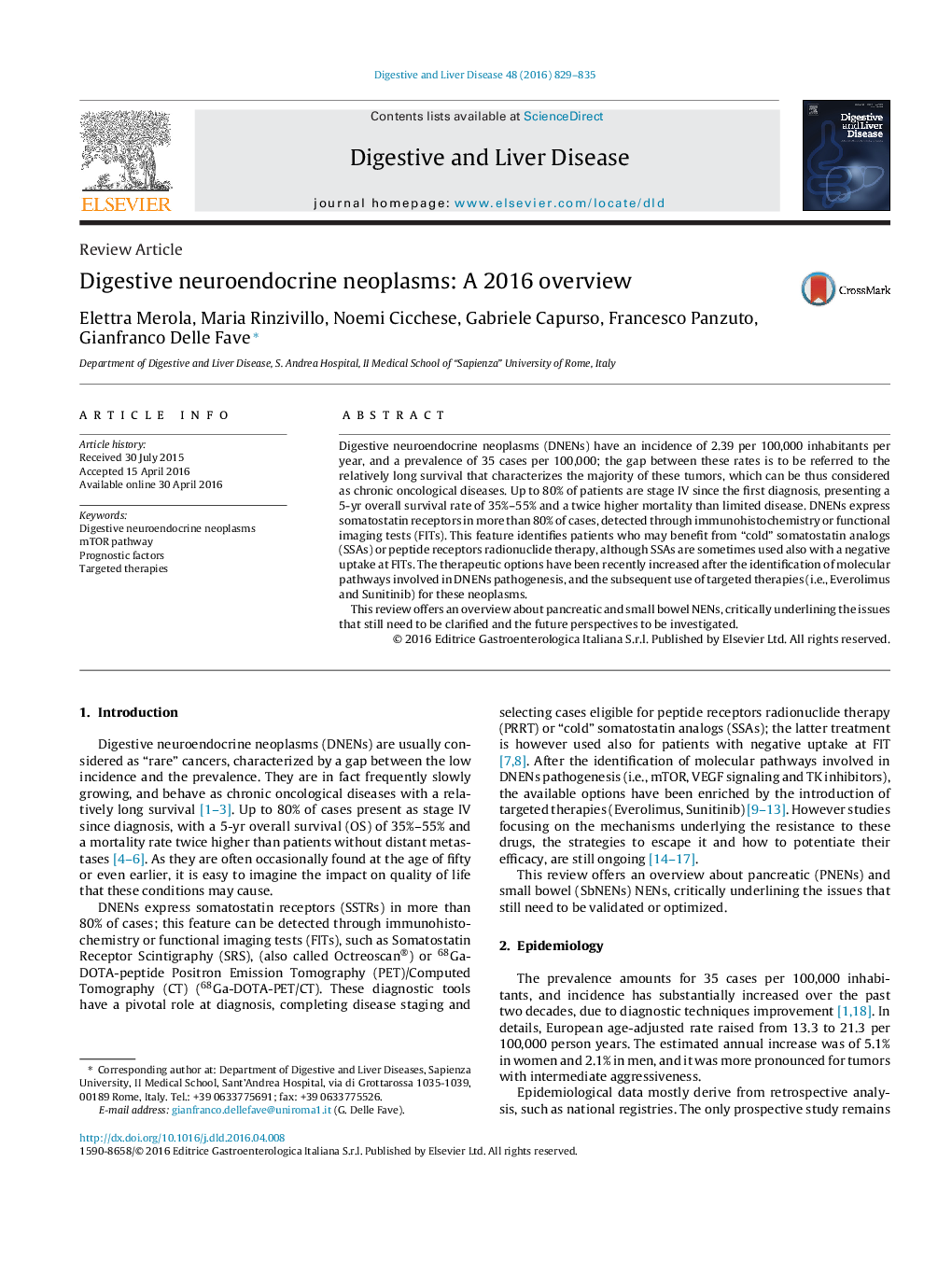| Article ID | Journal | Published Year | Pages | File Type |
|---|---|---|---|---|
| 6087919 | Digestive and Liver Disease | 2016 | 7 Pages |
Digestive neuroendocrine neoplasms (DNENs) have an incidence of 2.39 per 100,000 inhabitants per year, and a prevalence of 35 cases per 100,000; the gap between these rates is to be referred to the relatively long survival that characterizes the majority of these tumors, which can be thus considered as chronic oncological diseases. Up to 80% of patients are stage IV since the first diagnosis, presenting a 5-yr overall survival rate of 35%-55% and a twice higher mortality than limited disease. DNENs express somatostatin receptors in more than 80% of cases, detected through immunohistochemistry or functional imaging tests (FITs). This feature identifies patients who may benefit from “cold” somatostatin analogs (SSAs) or peptide receptors radionuclide therapy, although SSAs are sometimes used also with a negative uptake at FITs. The therapeutic options have been recently increased after the identification of molecular pathways involved in DNENs pathogenesis, and the subsequent use of targeted therapies (i.e., Everolimus and Sunitinib) for these neoplasms.This review offers an overview about pancreatic and small bowel NENs, critically underlining the issues that still need to be clarified and the future perspectives to be investigated.
